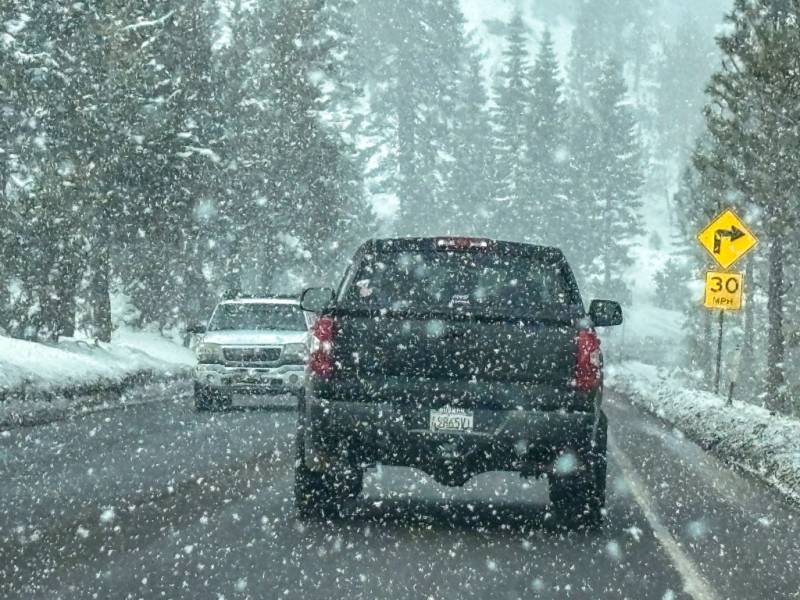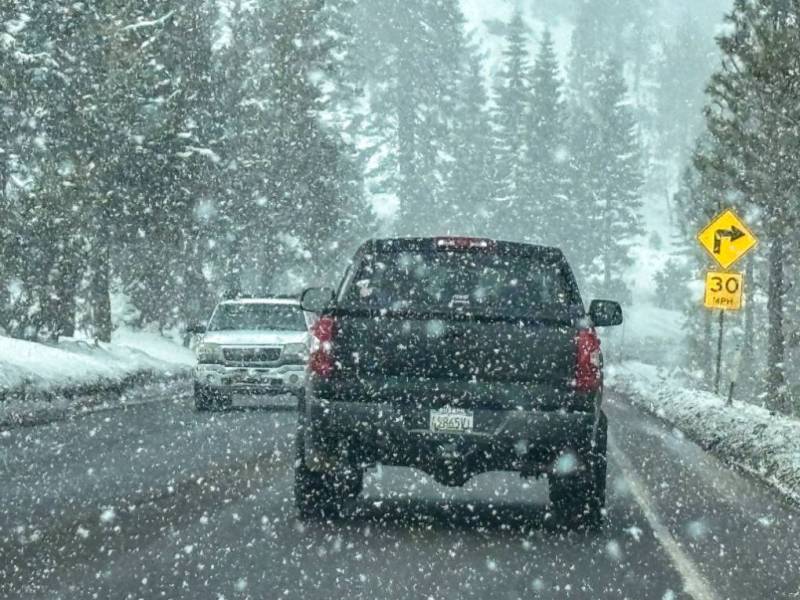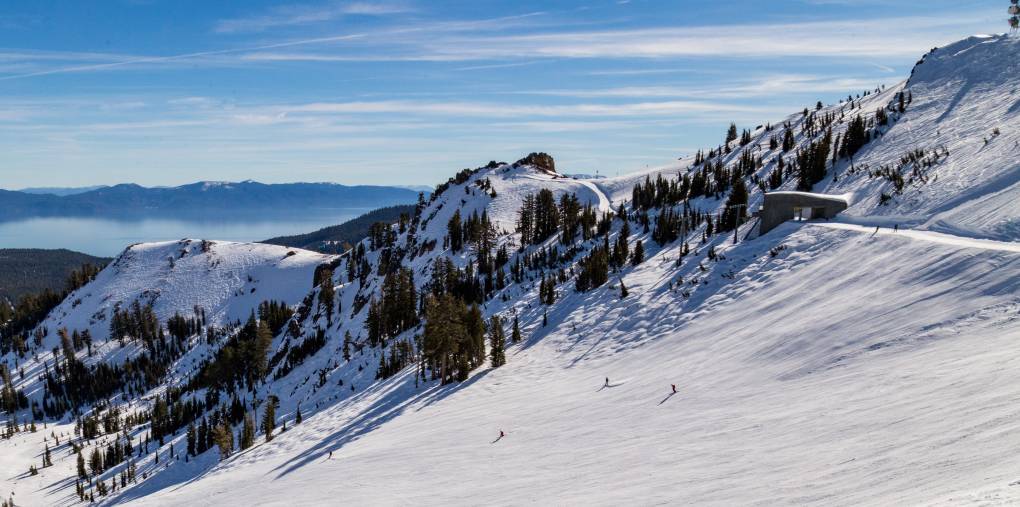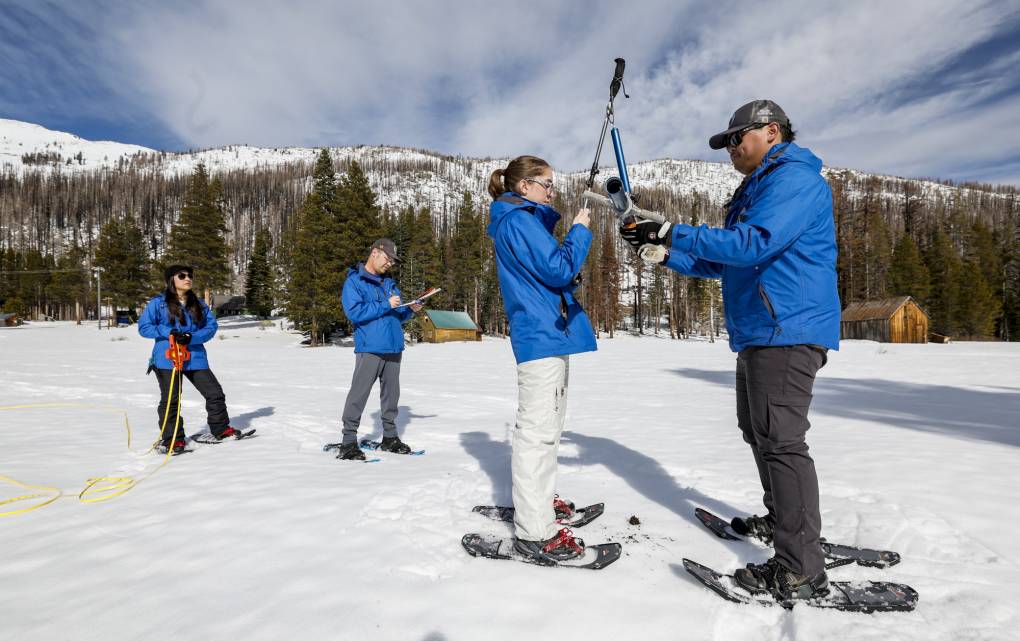“They’ve been overdoing it with expected amounts of precipitation all season and that makes us a little bit weary to throw big numbers out there,” he said.
For people who live in the Sierra or are visitors, Schwartz recommends buying three to five days’ worth of supplies, including food, water and flashlights. He said the best option is to hunker down in place once the cold winter storm hits.
“Preparing for these storms is akin to preparing for a hurricane,” he said. “People living here are putting plywood on their windows to prevent the snow from shedding off their roofs and shattering them.”
Schwartz said all this snow could bring the snowpack to just at or above average for the year. At the moment, the snowpack is 71% of the April 1 average, which is the timeframe water managers look to as an indicator of potential water supply for the rest of the year.
“Even if we got 10 to 12 feet of snow, we would still need another 2 to 4 feet to get us to the average for the entire year,” he said. “It’s not likely to be one-storm-that-fixes-all type of thing. But with that being said, it’ll definitely get us very close to that point.”
Thunderstorm potential, Bay Area snow, and more
The storm has about a 20% chance of creating thunderstorms over the foothill and the Sacramento Valley that could contain hail and lightning. Flooding risk is minimal because of the cold nature of the storm, but local nuisance flooding is possible.
Bay Area peaks like Mount Diablo and Mount Hamilton could glow white as the sizable cold storm passes over the region starting Thursday and lasting through Saturday, according to the National Weather Service.
“Snow levels look like they’re going to get down to about 1,800 to 2,000 feet,” NWS Bay Area meteorologist Dalton Behringer said. “It should be a nice site with green hills and snow-capped mountains.”



